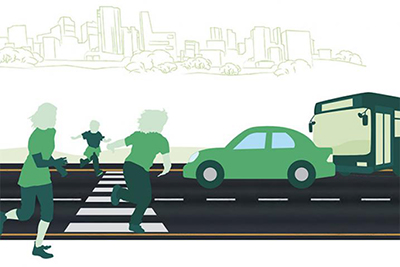ON Sunday, November 15, the United Nations World Day for the Remembrance of Road Traffic Victims was commemorated under the theme ” Remember; Support; Act” and Ministries of Government and other bodies involved in Road Safety participated. These included Office of the President, Ministry of Home Affairs, the Police, Ministry of Health, PAHO/WHO, the National Road Safety Council and Ms Denise Dias’ Mothers in Black.
In the last two decades, well over 100 persons per year lose their lives in traffic accidents and scores of others suffer serious and permanent injury to their bodies. The annual fatalities from traffic accidents compares with the annual deaths recorded from the COVID19 pandemic, the main difference being the victims of traffic accidents tend to be younger and vibrant citizens who could have contributed to Society. The victims of traffic accidents always leave a trail suffering with distraught wives or husbands, children and other close relatives. Traffic accidents and fatalities caused by traffic accidents can be eliminated or minimised.
 Even a century ago, Guyana had no traffic problem as we know it today. Transport of goods and persons was done by animal-drawn vehicles on dirt or burnt earth roads. Then from the early 20th century, larger quantities of motorised vehicles began to be imported and used countrywide and these required compact and fairly hard-surfaced roads. Marl roads, almost wholly confined to Georgetown and burnt brick roads came to be built countrywide. Marl was imported from Barbados, being used as ballast for ships. The large chunks of marl were then broken into small pieces and then compacted with heavy rollers. One of these rollers is preserved as a museum piece in the Georgetown City Hall’s yard.
Even a century ago, Guyana had no traffic problem as we know it today. Transport of goods and persons was done by animal-drawn vehicles on dirt or burnt earth roads. Then from the early 20th century, larger quantities of motorised vehicles began to be imported and used countrywide and these required compact and fairly hard-surfaced roads. Marl roads, almost wholly confined to Georgetown and burnt brick roads came to be built countrywide. Marl was imported from Barbados, being used as ballast for ships. The large chunks of marl were then broken into small pieces and then compacted with heavy rollers. One of these rollers is preserved as a museum piece in the Georgetown City Hall’s yard.
With the comparative quick growth of asphalt roads and the simultaneous greater importation of motorised vehicles, the traffic problem as we know it arose. The Police Traffic Department began to gradually take measures to deal with it: Stop signs, No Entry and Road Crossings were painted on the streets and special traffic police were deployed. To this time there was no special traffic department. Later on, traffic lights were installed. Vehicular insurance became obligatory The Police became more involved and all vehicles had to be certified by them that they were fit to be driven on the roads. The Public Works Department became much more involved in building the country roads. The Georgetown Public Hospital became more cognisant of traffic accidents and its victims. Educational campaigns on the safe use of the roads were regularly mounted. But despite all these measures, road accidents and accident fatalities kept increasing and remains a continuing problem in Guyana.
The problem persists despite the safety infrastructures established by the State and NGO’s; it persists because of the human beings who use the roads and this fact is now widely recognised.
Accordingly, a great deal of road safety effort is directed to road users, whether users of motorised vehicles or pedestrians. During World Day of Remembrance for Road Traffic Victims, the Chief Traffic Officer, Senior Superintendent Ramesh Ashram reiterated main advisories to road users:
In the first place, the driver must be sure that his vehicle is fully roadworthy and that he sits himself correctly so he could navigate along the roads in comfort, confidence and safety.
The vehicle driver must be aware of and have a strict adherence to the traffic laws – he must not drive too close to the vehicle in front of his, must not inappropriately attempt to overtake or cut in after overtaking. The driver must not attempt to divide his attention between driving and electronic equipment such as cell phone or CD player. He must carefully respect the speed limits and never drink and drive. One should never attempt to drive if he has been deprived of sleep since he will inevitably doze off and lose control of his vehicle. Pedestrians must also use the roads carefully by keeping on their side and only crossing when safe.
If human care and discipline as distilled in the World Day of Remembrance theme “Remember, Support, Act” are conjoined with the safety efforts made by the State and others, traffic accidents would be greatly minimised.



.jpg)








